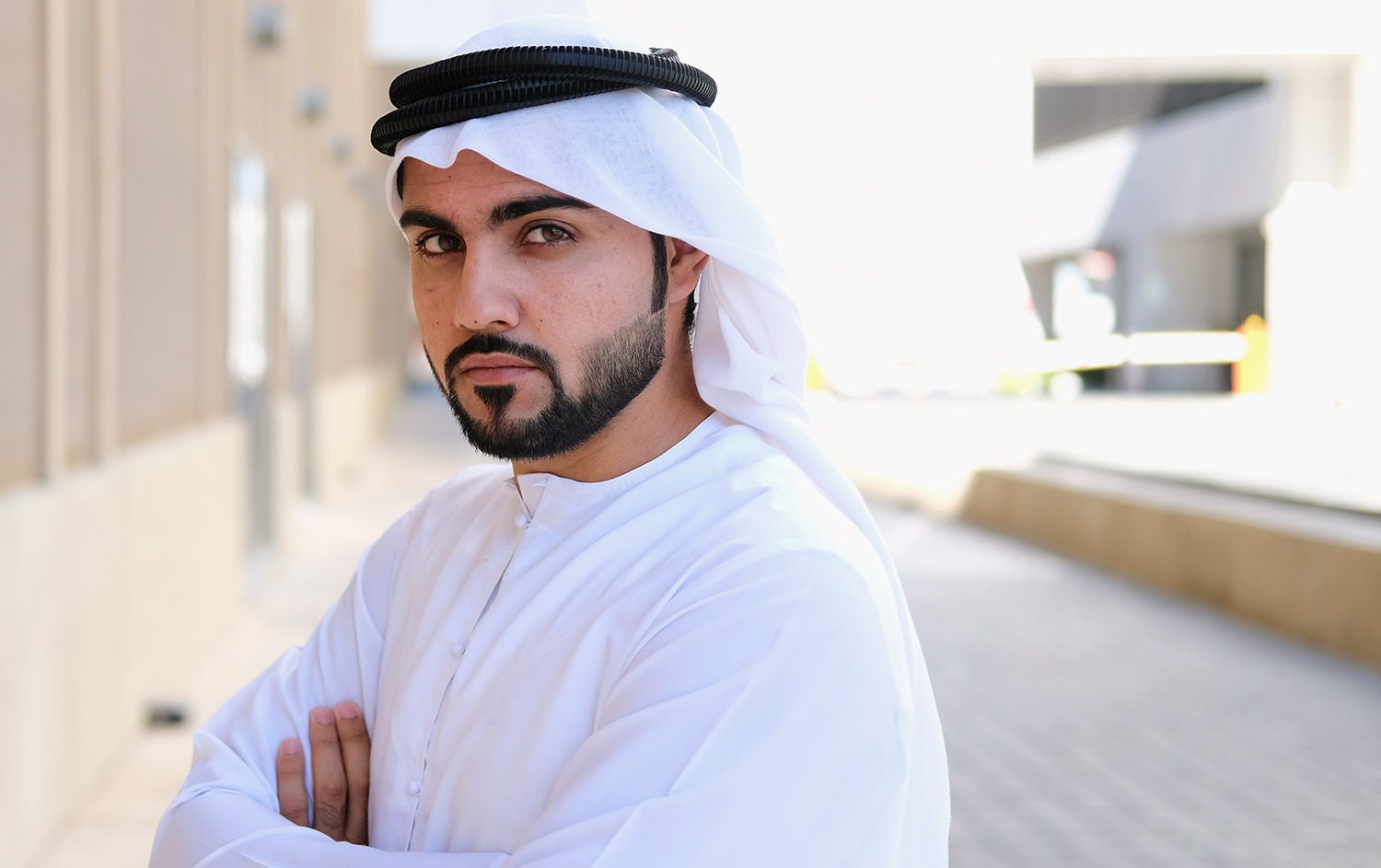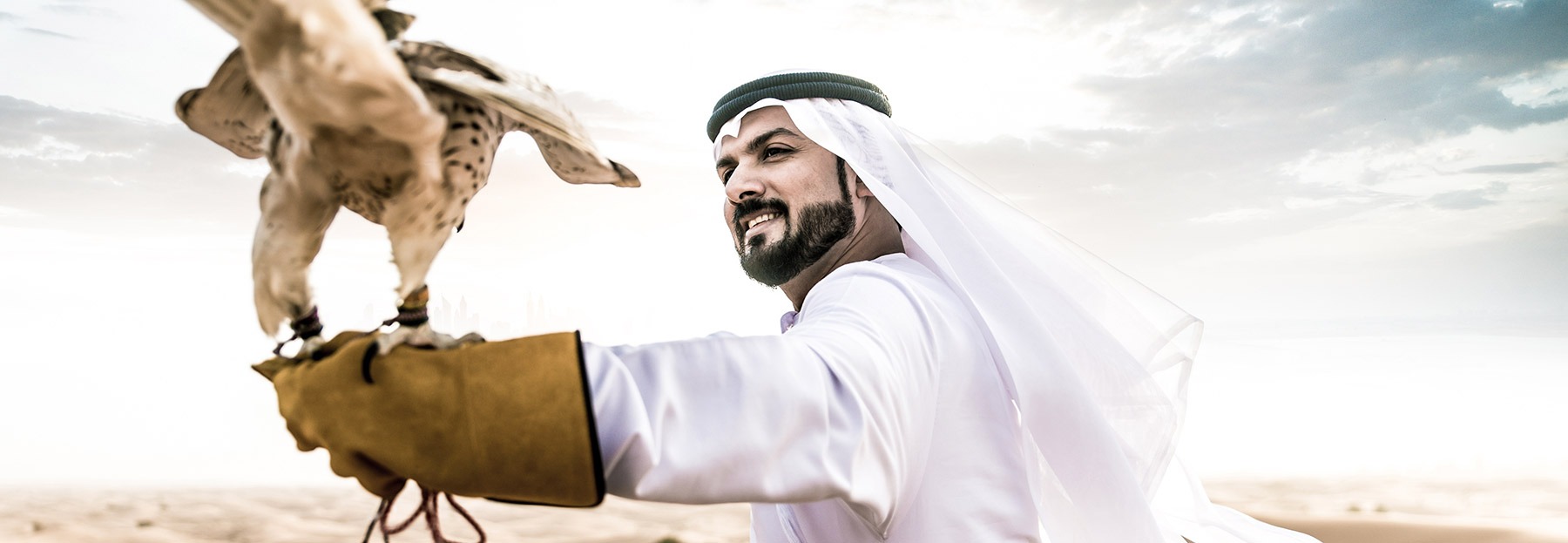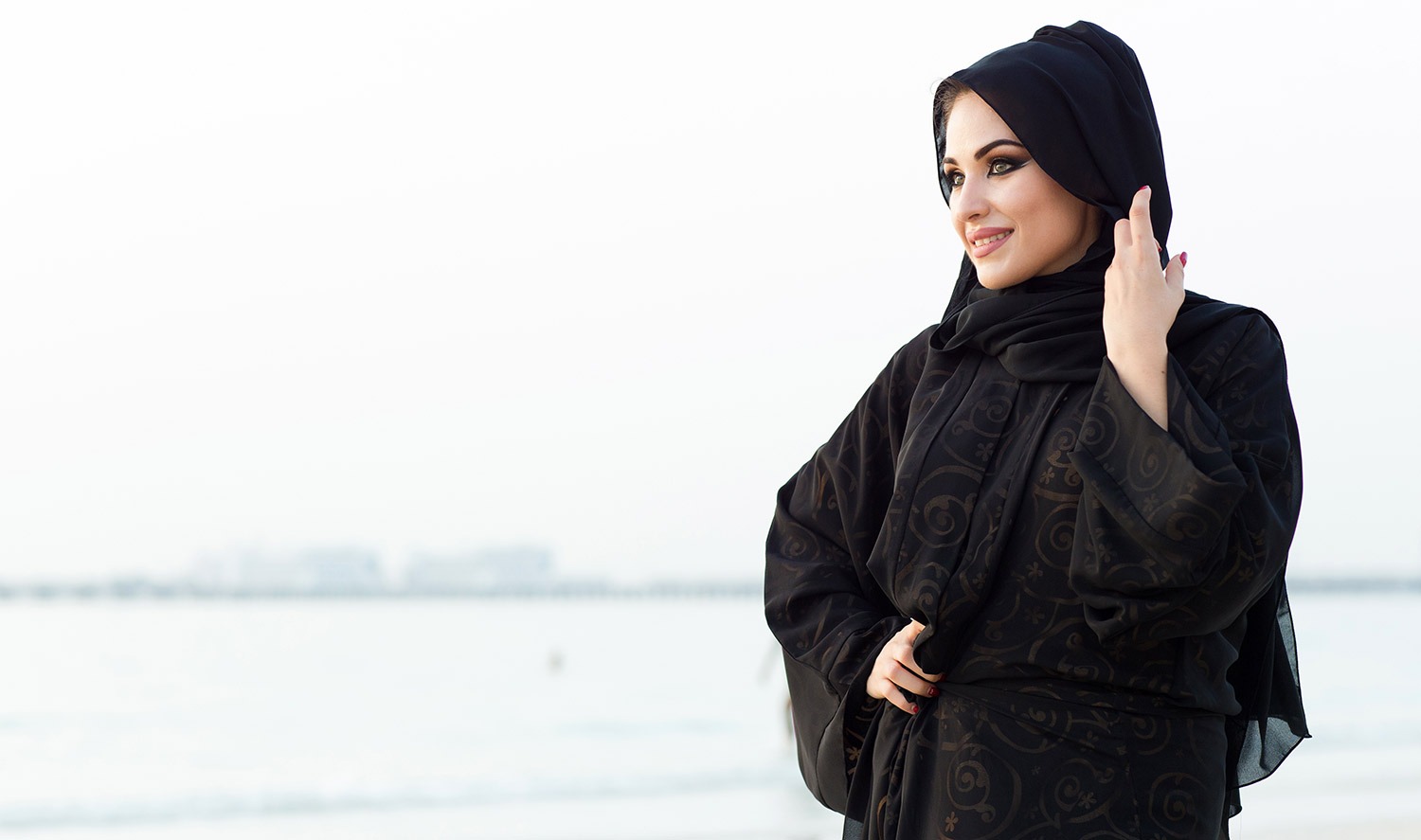
They are immeasurably proud of their ways of dressing, which has roots not only in culture but also in religion. Wearing the traditional dress of the UAE is something people here honor greatly. They don’t really wear European clothes in the UAE. An exception might be young Emirati.
Despite the fact that the whole of the Arabian Peninsula has a huge correlation in clothes, a few small differences could be pointed out. They are not very hard to notice, most of the time. Nevertheless, some of them will require a closer look. The main aspect of Dubai’s traditional clothing is an emphasis on modesty. Let us peer into a variety of clothing items used by men and women in the UAE.

Dubai’s traditional clothing for men is a Dishdasha or a Kandura. This is a single piece of clothes with length stretching to your ankles. When Emirati stay at home they frequently use a bit different Kandura, which has short sleeves. Formal Kanduras, on the other hand, always have long sleeves. In Saudi Arabia, the Kandura can also be called a Thawb.
If we are talking about the color palette of the Kanduras, they are mostly white. But there are also alternatives in colors of grey, beige, brown and a few others. That is because Kanduras are designed pursuing seasons of the year. Emirati men like to have up to 50 Kanduras to look fresh and without any creases. It is important to understand that the style and the color of the Kandura may differ from country to country.
In order to separate the Emirati Kandura from other variations, we will need to look at the collar and the sleeves of it. Emirati one does not have a collar in the first place and it has unpretentious brocade on the sleeves. Another differentiating feature is a long, twisted piece of cloth with a tassel at the end. This decoration is made of the same material as the Kandura. It hangs out of the Kandura’s neck and its name is Al Farukhah.

Ghutra is a type of headdress and a part of the traditional dress in Dubai. It is an inalienable element of men’s clothes. Ghutra is a piece of garment that has a square form and looks like a scarf. It protects your face and head from the scorching sun of the desert. In addition, Dubai men use it as a preservative from a high level of dust, when such need arises.As always, there are different variations to Gutra and Shemagh would be one of them. This particular type comes from the central part of the Arabian Peninsula. Nevertheless, it has spread around the place throughout the years. A distinguishing factor for Shemagh is red checks on white. Ghutra , on the other hand, is pure white and it is made of cotton and has a polished, smooth surface.
Ghutrahs can be worn in many styles. There is also meaning behind it, for men wear them differently depending on their age, status, or for some special occasion. Young men prefer to wear Shemagh, rather than the Ghutrah. They also don’t use Agal but just tie the Shemags around the head. This style is called Hamdaniyaa.
In other countries like Kuwait and Saudi headdresses tend to have a lot of similarities with Dubai’s traditional clothing. But, for example, in Oman and Yemen, a totally different type of headdress is common. In its form and look it reminds more about an Indian Turban.
An inseparable part of Dubai men’s clothing is Agal. It is a black cord that holds the Ghutrah in place on the head. This is a single piece of a large, circular band, which is then folded and worn doubled (two rings of the band are formed). The two cords that hang at the back with a few tassels are called Tarbousha. The number of these cords may differ depending on the country. For example, Qatari Agals have four cords. Agal is not really used on casual occasions, but it is used for formal ones. Besides playing the supportive part, Ghutrahs have an aesthetic value. This ornament is often perfumed as part of the custom.
White Agals should be mentioned separately, for they are usually worn by religious groups. There are also Agals in other colors but those ones have a decorative role and are not trendy or fashionable these days.
Contrary to most of the UAE traditional clothing, Bisht is actually akin to all Arab countries. It is basically a dark (or beige), sleeveless cloak, which men wear over their Kandura. It is used for ceremonial purposes mainly: weddings, festivals, etc. They can also be seen worn by important and royal figures, as a sign of prestige and wealth. The price of such clothing might be up to 15,000 Dhs, as a result of the expensive décor- gold, silver or copper.
One of the common misconceptions about the Bisht is that it is a winter type of clothes. In the past Bedouins used it to withstand the cold winters, which serves as a ground for this mistake.

Abaya is a traditional type of clothes for women in the UAE. It is a delicate long cloak that has very long sleeves and covers their whole body from head to toe. The only face, palms and feet are visible. Abaya’s main function is to cover all bright colors, so it is worn on top of all other closings. Women wear both traditional and European clothes underneath the Abaya. But the traditional dark color of the robe will hide everything from the eye. These days, however, you can see some embroideries or artwork on the plain black Abaya. Even several new colors have been added to the catalog such as brown, grey, beige, etc. This allows old traditions to compile with modernity and a fast-changing world.
When Arab women are not amongst men, but in a company of other women they wear a Kaftan, also known as Jilabiyya. They also wear it at their homes. In contrast to Abaya, Kaftan is rich in decorations and has a huge variety of colors. Kaftan can also be compared to male Kandura, Jilabiyya just being a female version. Arab women wear pants called Sirwal along with the Kandura.
Hijab is actually a collective term referring to all sorts of headdresses worn by Muslim women. At the same time, it is an essential part of every woman’s clothing in the UAE. The Hijab covers the neck and hair following the modesty of Islamic traditions. This headdress is made of very light material, which allows easy access for air. There are many types of Hijab and we are going to describe briefly some of them.
One of the styles is called Shayla. It is a light black scarf that envelops the head and covers the hair and shoulders.
Gishwah is very similar to Shayla except for the even more translucent fabric. You can see through it even when it is being worn.
Another distinctive style is called Burqa. This headdress reminds more of a veil, which covers most of the face, except the eyes. They are often referred to as face masks.




The UAE’s rich history is rooted in trade and tied to Islam. Its unique location between Europe and the Far East became the crucial factor in it's growth into the world's largest trading hubs. Throughout the ages, these lands had attracted merchants from India and China, and were prized by Europeans, in particular the Portuguese, the Dutch and the British.
After the discovery of oil and the formation of the Emirates, the wise rulers began the rapid development of the country's economy, shaping it into what it is today. Though small in size, the UAE quickly became an important player in regional and international affairs.
Although it's growth and development, UAE heritage have not been forgotten - on the contrary, is still well-respected among the nationals. History and culture of local people can be felt in the legendary hospitality of local hotels, architecture of modern skyscrapers and openness and kindness in living among the multinational community.
Here you can read various articles about UAE heritage, history and culture, and better understand, why this country's development became such a success throughout the years.